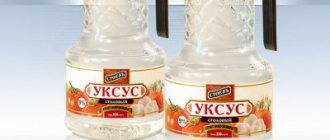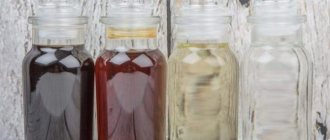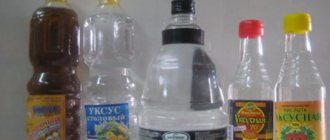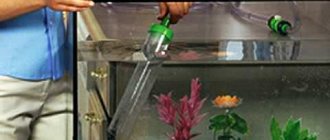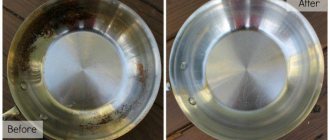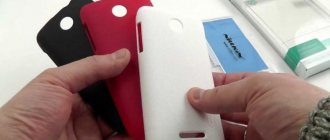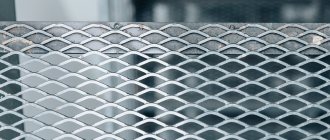Today, various “folk” remedies that do not contain aggressive chemicals are increasingly used in everyday life. Most housewives prefer to use table, salt, soda and even the well-known carbonated drinks Coca-Cola and Sprite as cleaning and washing compounds. However, ordinary acetic acid is especially popular. This liquid perfectly replaces household chemicals, doing an excellent job of cleaning sewer pipes, removing dirt from tiles, bathrooms and showers, rust, mold and other unpleasant things. It also successfully serves as a disinfectant during wet cleaning of premises, capable of ridding your home of 90% of germs, viruses, bacteria and fungi in one fell swoop.
Acetic acid is a very useful and economical product, especially if it is not made by chemical manipulation without natural ingredients, but obtained by using fermented wine or juice in a distillation apparatus. In this case, it contains a lot of useful substances: selenium, calcium, zinc, iron, phosphorus, manganese, copper, sodium, potassium and carbohydrates.
Another important advantage of 70% vinegar is that in diluted form it can be used for purely culinary purposes, like regular table vinegar. As practice shows, diluting ordinary 9 vinegar from 70 essences is not at all difficult.
How to make solutions of various concentrations at home
0
Source:
See all photos in the gallery
Concentrated vinegar 70% can be easily diluted with plain water. It’s easy and quick to make table vinegar of various strengths yourself at home, but you need to know the proportions of water and the ratio of acetic acid and essence to it. There is a simple way to make 9 percent vinegar from 70 percent vinegar. To get 9% vinegar, add two tablespoons of 70% vinegar to a faceted glass of water. Agree, with a glass on hand it is easier to dilute and understand how to dilute the 70% essence.
0
Source:
It is important to use vinegar diluted in a glass of water for its intended purpose. By following the clear instructions of the recipe, you will be able to protect yourself from the dangerous effects of undiluted acetic acid on the human body. There is a formula for diluting vinegar, but with its help you need to do the calculations yourself. For convenience, we suggest using a hint on how much water and essence you need to take:
0
Source:
By combining 1 part acid and 6 parts water, we get a 10% vinegar solution. How to dilute 70 vinegar to 9 percent? To obtain the required concentration, use a ratio of 1:7. To obtain 8 percent vinegar, mix 1 part vinegar with 8 parts water. For a 7% solution, a ratio of 1:9 is suitable. How to dilute vinegar 70 to 6? To get a 6% vinegar concentration, mix water and acid in a ratio of 11:1. Acetic essence and water in a ratio of 1:13 produces a 5% vinegar solution. Vinegar with a concentration of 4% is made from 17 parts water and 1 part acid. A 3% vinegar solution consists of 22.5 parts water and 1 part 70% vinegar essence.
Manufacturers write...
On packaging with acetic acid you can often find the following recommendation:
- Before use, dilute in 20 parts of water.
But with this proportion, 9% vinegar will not work.
In fact, a concentration of 1:20 is very weak, it’s almost water. Here the manufacturer deliberately indicated the weakest concentration, without going into much detail about percentages, dosages and parts. This tradition dates back to Soviet times.
Let's compare: A vinegar bottle made in 1970 (we'll tell you why we keep it later) and one made in 2017. It is curious that the manufacturer of both bottles is the same: Dmitrievsky Lesohimzavod, Kineshma. The modern packaging even says: On the market for over 100 years. What's true is true

